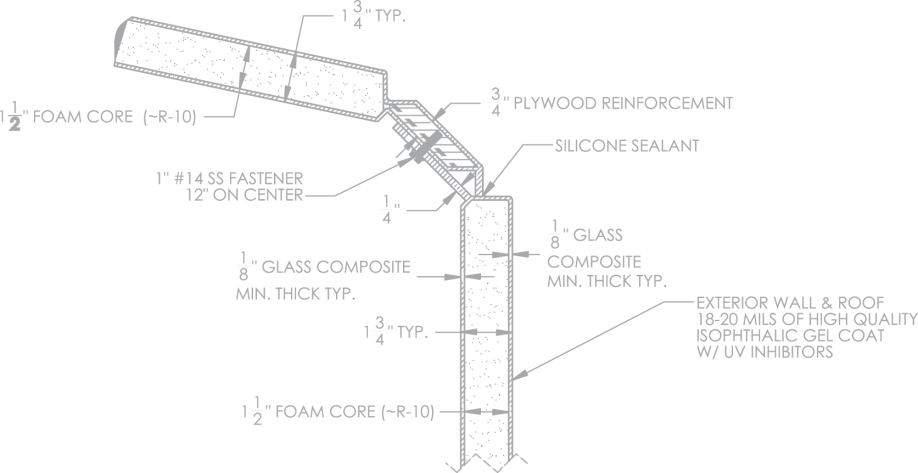Composites: The Key to Modern, Lasting Building And Construction
Composites: The Key to Modern, Lasting Building And Construction
Blog Article
Unlocking the Environmental Benefits of Recycled Composites in Building and Style
In the realm of construction and layout, the utilization of recycled composites holds considerable assurance for boosting sustainability techniques and lowering ecological influence. The shift towards an extra lasting future in these sectors pivots on unlocking the full possibility of recycled composites.

Ecological Influence Reduction
The reduction of environmental effect via making use of recycled compounds in building and construction and layout plays a critical function in sustainable practices. By incorporating recycled composites into building materials, the building and construction sector can dramatically lower its carbon footprint and contribute to a much more environmentally friendly future. These lasting materials, made from repurposed plastics, timber fibers, or various other recycled aspects, provide a sensible option to typical building and construction products without endangering on quality or longevity.
Recycled composites assist divert waste from garbage dumps and reduce the need for removing raw products, hence preserving natural deposits. Additionally, the manufacturing process of these compounds typically takes in less power and sends out fewer greenhouse gases compared to generating virgin materials (composites). This shift towards making use of recycled compounds not only minimizes environmental injury however also promotes a circular economic climate by encouraging the reuse of products that would or else be discarded
Waste Reduction
With an emphasis on minimizing waste in building and design, the assimilation of recycled composites uses a sustainable solution to decrease environmental effect. Waste reduction is a critical facet of sustainable practices, and using recycled composites offers a possibility to accomplish this goal successfully. By making use of materials that have currently offered their preliminary purpose, such as recycled plastics or reclaimed timber fibers, the building and construction and design markets can significantly minimize the quantity of waste produced and sent to land fills.
Recycled composites have the possible to divert substantial quantities of waste from traditional disposal methods, contributing to a more round economic situation where resources are utilized efficiently. Additionally, the production procedure of recycled compounds commonly eats much less power and creates less exhausts compared to virgin products, better reducing the environmental impact of building and layout tasks.
Applying waste minimization methods with the incorporation of recycled composites not only aids in conserving natural deposits however also advertises a more lasting method to structure and making for a greener future.
Power Conservation
Integrating recycled composites not just minimizes waste in building and construction and style but also plays a crucial function in enhancing energy conservation methods within the market. The usage of recycled composites in building can dramatically add to power preservation with different methods. First of all, the production of virgin materials typically requires considerable power inputs, whereas using recycled composites eats much less power, therefore minimizing total power usage. Furthermore, incorporating recycled composites can contribute to better insulation buildings in structures, reducing the demand for too much home heating or cooling, and subsequently lowering energy usage for climate control. Additionally, the lightweight nature of several recycled composites can result in lighter structures, needing less power for transport and setup. By advertising making use of recycled compounds in construction and layout, the sector can make considerable strides in the direction of achieving energy effectiveness and minimizing its carbon impact, inevitably contributing to a much more sustainable developed atmosphere.
Carbon Impact Decrease
Enhancing sustainability methods via the utilization of recycled compounds in building and construction and layout considerably reduces the carbon footprint of the sector. By integrating recycled materials right into the production of composites, the requirement for virgin sources reduces, bring about lower power usage and greenhouse gas emissions related to standard production processes. This reduction in carbon footprint is vital in combating climate change and advertising an extra eco-friendly technique to building and design.
Furthermore, the usage of recycled compounds additionally helps in drawing away waste from garbage dumps, thus mitigating the ecological influence of disposal and promoting a circular economic climate. The carbon impact reduction accomplished through the adoption of recycled compounds straightens with the international push in the direction of sustainable methods and the reduction of commercial exhausts. It showcases a commitment to responsible source monitoring and a change towards greener alternatives in the building and style sectors. Ultimately, by prioritizing the assimilation of recycled composites, the industry can make substantial strides in lowering its carbon footprint and adding to an extra lasting future.
Lasting Future
The assimilation of recycled compounds in building and style not just addresses prompt ecological problems yet also lays a strong foundation for a sustainable future in the industry. By including recycled compounds into building materials and products, the construction and layout markets can considerably reduce their reliance on virgin sources, bring about an extra round economic climate. This shift in the direction of sustainability is important for reducing the ecological effect of traditional construction techniques, which commonly lead to high degrees of see this site waste generation and source deficiency.

Conclusion
In conclusion, recycled compounds provide significant ecological benefits in building and layout by minimizing environmental effect, lessening waste, conserving energy, lowering carbon impact, and promoting a lasting future. Accepting making use of recycled composites can add to a more environmentally-friendly technique to building and design, eventually resulting in a more sustainable and greener future for all.
The decrease of ecological influence through the usage of recycled composites in construction and style plays a critical role in sustainable techniques.With an emphasis on minimizing waste in construction and layout, the integration of recycled composites uses a lasting service to lower environmental influence. By promoting the usage of recycled compounds in construction and layout, the sector can make considerable strides in the direction of attaining power efficiency and lowering its carbon footprint, inevitably adding to a more sustainable constructed environment.

Report this page